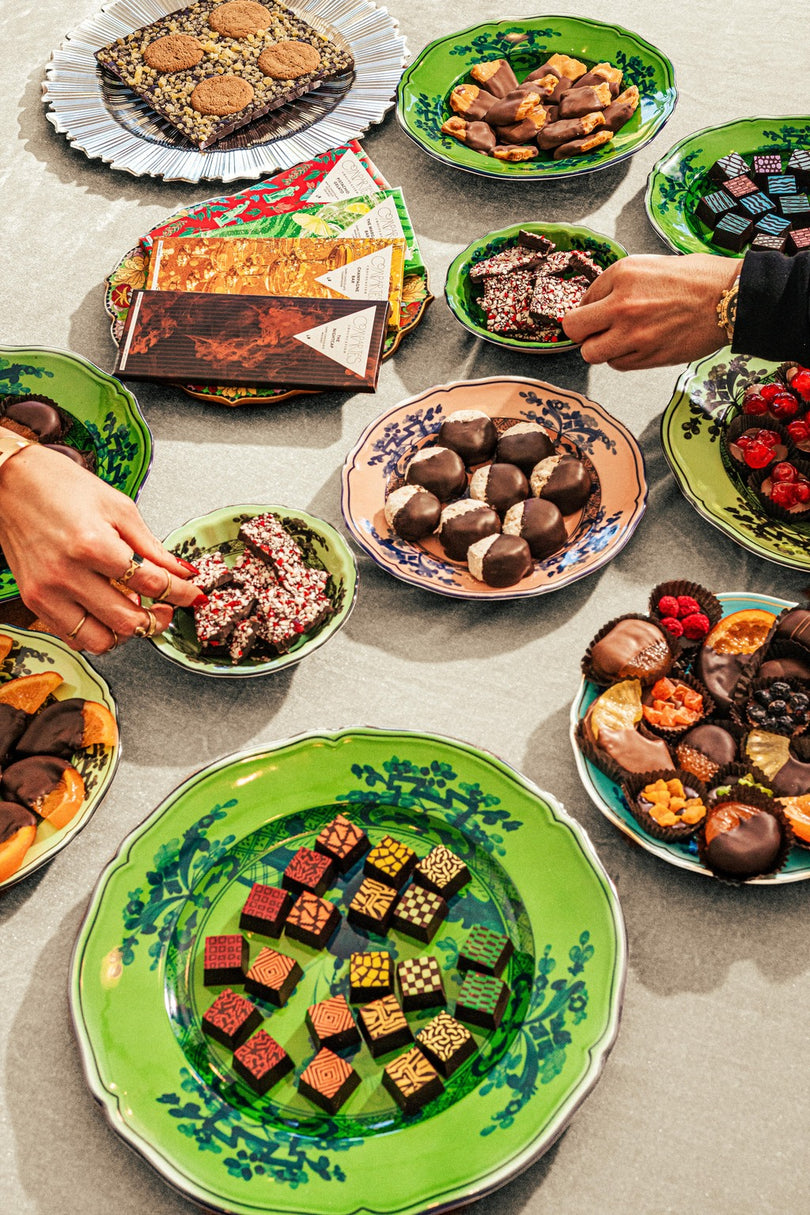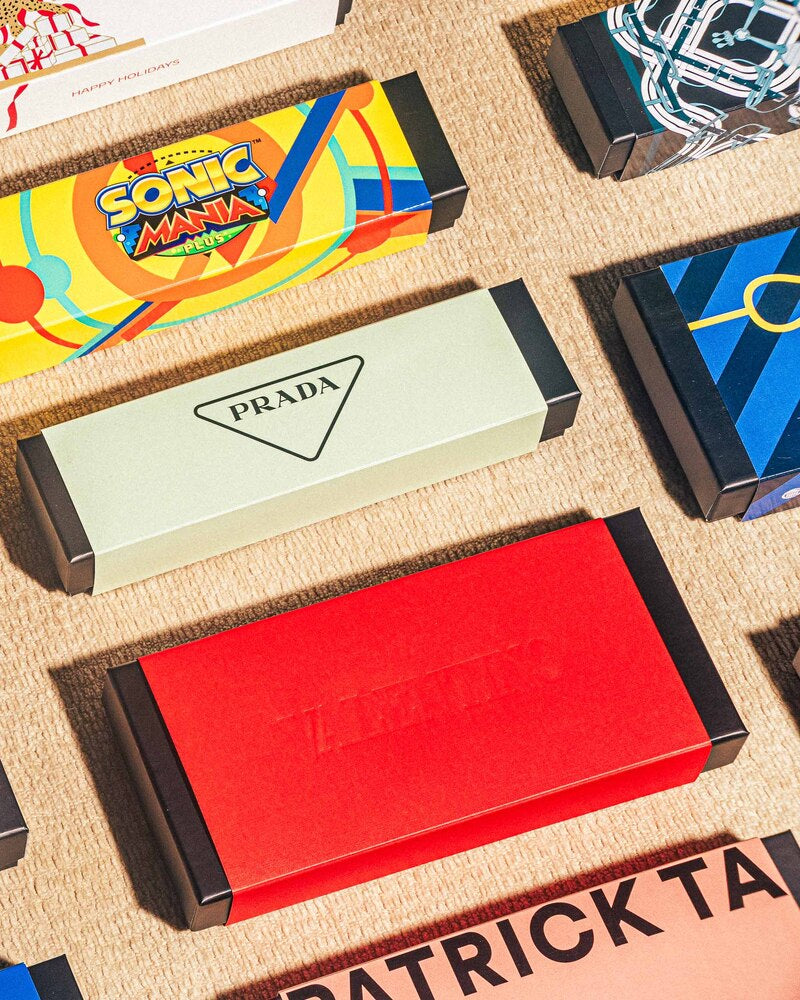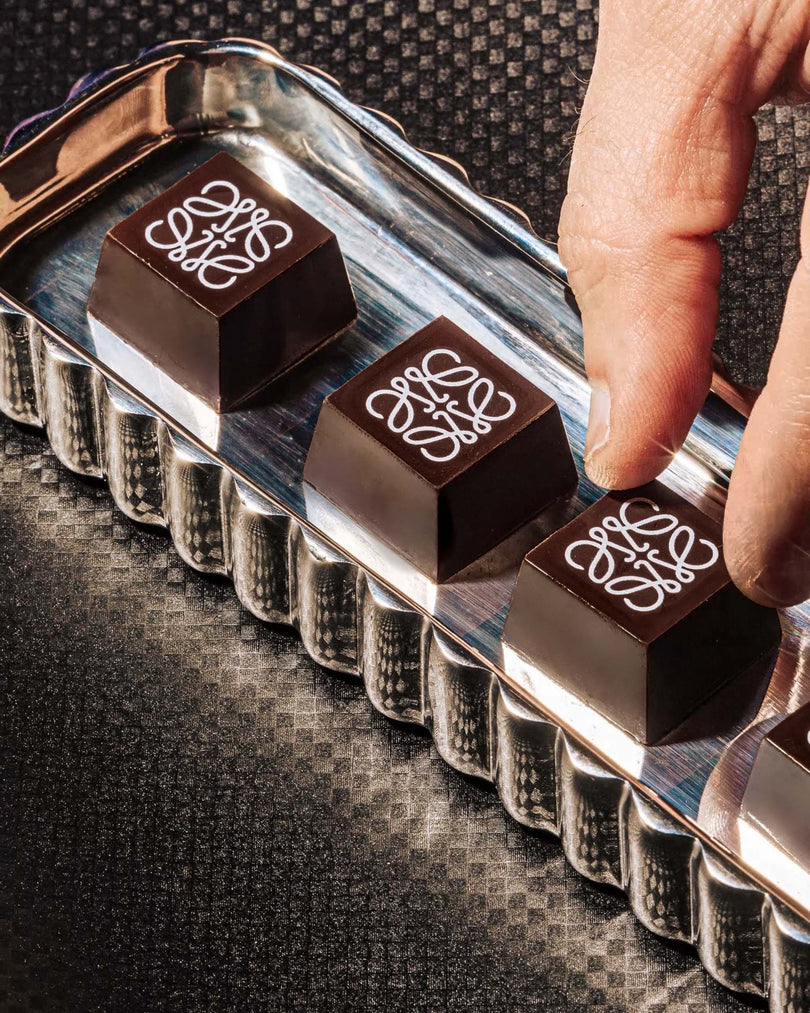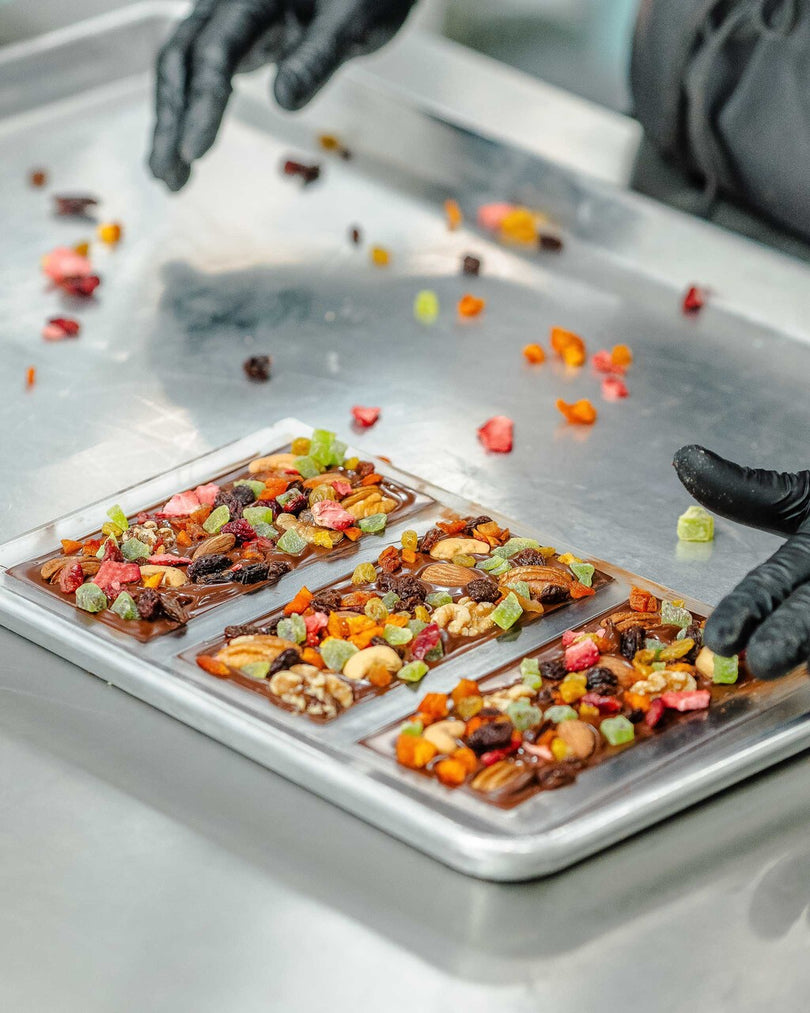According to recent consumer research, Millennials and Gen Z rank among the most prolific gift-givers, far outpacing older generations not just in volume, but in intent. For them, gifting doesn’t read as a transaction. It shows identity, connection, and self-expression. And that’s where traditional corporate gifting has repeatedly missed the mark.
A generic branded tumbler or mass-produced cheese basket might check a box, but it doesn’t resonate. Not with an audience raised on personalized playlists, curated social feeds, and products tailored down to the font on a product’s packaging.
For Gen Z especially, the expectation is clear: if a brand wants loyalty, it must understand them not just as customers, but as individuals. And that mindset is redefining how companies think about luxury itself.
However, luxury to Gen Z is no longer defined solely by price or prestige. It lives at the intersection of authenticity, relevance, and intentionality. For brands focused on retention, this shift matters deeply.
The New Baseline: Personalization as Expectation
Consumer expectations have fundamentally shifted, and businesses operating under old assumptions are already paying the price. McKinsey research shows that 71% of consumers now expect companies to deliver personalized interactions, while 76% express frustration when those expectations go unmet.
These numbers represent more than preference. They signal a mandatory threshold that companies can no longer afford to ignore. For Gen Z and millennials, the consequences of missing this mark are immediate and substantial.
Nearly one-third have abandoned loyalty programs specifically because they felt impersonal, according to consumer behavior studies. That exodus represents more than lost engagement. It signals a complete breakdown in trust at the moment brands assume loyalty is strongest.
This shift also reflects a broader redefinition of what consumers consider valuable. More than 38% of Gen Z now gravitates toward gifts and interactions that carry emotional weight, favoring customized experiences and personal touches over standardized offerings.
This preference extends beyond the gift itself. It reveals how younger consumers evaluate every brand touchpoint, from marketing messages to product design to customer service interactions.
So what changed? The definition of personalization itself has evolved beyond surface-level customization.
McKinsey partner Bo Finneman describes the change plainly: "They're looking beyond tangible products and actually trying to understand what it is that makes the company tick. What's its mission? What's its purpose? And what is it actually trying to build for us as a society?"
That scrutiny has practical implications. Gen Z consumers, as McKinsey research reveals, actively resist brand messaging that feels manufactured or self-promotional. They form their own perceptions by drawing from multiple sources, including peer networks, micro-influencers, and direct brand interactions.
Authenticity has become non-negotiable. And any disconnect between what a brand claims and what it delivers gets exposed immediately through social channels and word-of-mouth networks.
This generation also rejects the idea of fitting into predefined categories. They seek products and experiences that allow them to express individuality rather than conform to group identity.
As McKinsey associate partner Emma Spagnuolo notes, if anything within a brand story lacks authenticity, "it's going to be exposed immediately." The speed at which information circulates has eliminated the buffer that once allowed brands to control their narratives.
Dotdash Meredith's 2024 research on luxury consumers reinforces this transformation. Their survey found that how something makes people feel now matters more than traditional markers of prestige or heritage.
This emotional expectation applies across all consumer categories, not just premium segments. Brands that deliver experiences tailored to individual preferences and values create lasting impressions. Those that default to one-size-fits-all approaches become forgettable.
The result is an environment where personalization has moved from a competitive differentiator to a baseline requirement. And companies that continue treating customization as an add-on feature rather than a core strategy are losing customers they assumed were already won.
This is why brands must now demonstrate they understand not just what consumers buy, but why they buy it, what they value, and how those values align with the company's mission. Anything less registers as indifference.
Gen Z’s “Worth It” Mindset
Understanding what Gen Z expects is only half the equation. Understanding what they will actually pay for completes it. This generation has a complex relationship with spending that defies traditional retail logic. They are not necessarily frugal, yet they are exceptionally selective.

McKinsey research reveals a dramatic shift away from price-driven decision-making. Among older generations, a significant portion of consumers identify as price shoppers, making purchases based primarily on cost comparison. That cohort is shrinking among Gen Z and millennials.
Bo Finneman, McKinsey partner, describes: "It's no longer as simplistic as 'That's $2.99, and this is $3.25, hence I will buy that.' There's an aspect of the simplistic lens of pure price and value that seems to be diminishing."
What has replaced price sensitivity is a more nuanced calculation centered on perceived worth. Gen Z consumers evaluate purchases across multiple dimensions: quality, exclusivity, emotional resonance, brand values, and the experience surrounding the product.
When those factors align, they spend willingly. When they do not, price becomes irrelevant because the purchase never happens.
This explains why Gen Z demonstrates both budget consciousness and luxury spending simultaneously. Bain & Company projects that Gen Z and millennials together will account for 70% of global luxury purchases by 2030. However, their definition of luxury has fundamentally changed.
Dotdash Meredith research found that when asked to rank 25 attributes defining luxury products, Gen Z placed expensiveness in the 13th position. More respondents reported caring about whether a product felt expensive than whether it actually was expensive.
Leah Wyar, president of entertainment, beauty, and style at Dotdash Meredith, summarizes the transformation: "New luxury consumers who are younger and more diverse are changing the very definition of what luxury means, placing a priority on how something makes you feel over how much something costs."
That shift has practical implications for how businesses approach gifting and customer appreciation. A $40 gift that feels unmistakably personalized now carries more emotional weight and generates stronger brand loyalty than a $400 item that could have been given to anyone.
McKinsey's consumer segmentation research confirms this trend is accelerating. When researchers isolated Gen Z consumers and analyzed their purchasing behavior, they identified three primary clusters: value-focused, quality-focused, and image-focused shoppers.
The image cluster, which prioritizes self-expression and emotional connection over price, is growing significantly. Roughly 13% of consumers have shifted from the value cluster into the image cluster, and this movement is not limited to Gen Z. Even some baby boomers are making the same transition, suggesting the change represents a lasting cultural shift rather than generational preference.
McKinsey associate partner Emma Spagnuolo emphasizes that this is not about life stage: "When we look at the segmentation, this is not necessarily about life stage. What we see is that even some boomers have shifted into the image category." Longitudinal data over three years shows the trend is accelerating, not receding.
For Gen Z specifically, luxury purchases are driven by self-expression rather than status display. Unlike millennials who may seek recognizable brand logos as badges of success, Gen Z consumers want items that communicate individuality.
They are willing to pay premium prices, but only for products that feel authentically aligned with their identity. Over 50% of Gen Z luxury consumers prioritize experiences or storytelling over product ownership, according to McKinsey research.
This preference extends beyond traditional retail into how they allocate discretionary income overall. GWI data shows Gen Z over-indexes significantly for experiential spending categories, including festivals, spa services, and cultural events. They are actively choosing memories over merchandise.
Companies operating under the assumption that expensive equals impressive are missing the actual calculation Gen Z consumers are making. So the question is not what something costs; the question is whether it was worth giving.
The Gifting Economy: Large and Growing
This shifting of calculation around worth has arrived at a pivotal moment for corporate gifting. Businesses are not pulling back on relationship investments. They are doubling down.

Coresight Research valued the U.S. corporate gifting market at $258 billion in 2022, with projections climbing to $312 billion by 2025. Within that broader market, personalized gifting alone reached $9.69 billion in 2024 and is expected to hit $14.56 billion by 2030, growing at nearly 7% annually.
These numbers reflect more than market expansion. They reveal strategic recalibration. In fact, post-pandemic research shows 61% of corporate gift buyers changed their working model, and among those, 91% expect gifting frequency to either increase or remain unchanged. And the occasions driving that activity have shifted as well.
Employee appreciation and milestone recognition now lead at 66%, followed by client and partner appreciation at 52%. Traditional holiday gifting has dropped to 49%, signaling that corporate gifting has become a year-round retention tool rather than a seasonal obligation.
Spending patterns confirm businesses understand the stakes.
Organizations are allocating fewer gifts at higher price points, with more respondents citing spend ranges of $100 to $150 or higher.
Pari Raccah, Senior Vice President and General Manager at GiftNow, describes the transformation plainly: "It's exciting to see how the 2022 survey results reflect the more intentional approaches organizations are taking with their corporate gifting efforts to help build and strengthen relationships."
Luxury’s Lesson: Personalization and Experience Drive Value
Even the luxury sector has confronted this reality. Bain & Company's 2024–2025 outlook reported that global luxury spending remained essentially flat as consumers shifted their priorities toward experiences over generic corporate swag.
Future growth, the analysis concluded, would depend on reinvention centered around ultra-personalization and meaningful customer connection.
Federica Levato, partner at Bain & Company and leader of the firm's EMEA Fashion & Luxury practice, framed the challenge perfectly: "To secure future growth, brands will need to rethink their luxury equations, re-establishing creativity and blending old and new playbooks.
This includes rediscovering their essence and embracing the foundational pillars of the industry: desirability fueled by craftsmanship, creativity, and distinctive brand values; meaningful, personalized, and culturally resonant customer connections and experiences."
That prescription extends beyond fashion houses. It offers a blueprint for any business relying on sustained client relationships.
Within the broader corporate gifting market, luxury gifting has risen from roughly $639 million to more than $912 million in 2025, with forecasts indicating it could reach about $1.86 billion by 2033. That trajectory reflects a Compound Annual Growth Rate of 7.72 percent, closely aligned with the broader market’s projected 8.28 percent growth.
Rather than outpacing the broader market, luxury gifting is expanding at a comparable rate. Underscoring that its strength lies not in speed, but in the sustained demand for premium, high-touch experiences that reinforce lasting relationships.
That said, companies investing in luxury corporate gifts experience five times greater client retention rates compared to those using standard promotional items. And strategic luxury gifting programs deliver 31% lower turnover and 63% higher engagement.
These are not marginal improvements. They represent the difference between keeping a client for two years versus a decade, between losing institutional knowledge annually or building teams that stay and contribute.
Luxury gifting, executed with personalization and intentionality, has become less about optics and more about measurable business outcomes.
From Gesture to Strategy: A Gifting Playbook
Understanding that personalization drives retention is one thing. Executing it systematically is another. Businesses seeking to transform gifting from an obligatory gesture into a strategic advantage must rethink how they collect information, deliver choice, and create lasting connections.
The foundation starts with consent-based data collection.
Allowing recipients to opt in and share preferences signals respect for autonomy while gathering actionable intelligence. This shifts gifting from guesswork to precision, aligning with Gen Z's expectation that brands understand their values without violating their privacy.
Choice also matters.
Offering dual paths between a tangible object and an experiential option acknowledges that 65% of Gen Z would rather receive an experience than a physical item, according to consumer research. That preference is not theoretical.
Eventbrite found that 78% of Gen Z prioritize spending on experiences over goods. Providing both options allows recipients to self-select based on what resonates most.
Personalization extends beyond the item itself.
Seven out of 10 millennials report being more likely to shop from brands offering customization options, and the global personalized gift market is projected to reach $38 billion by 2027. A handwritten note, an engraved detail, or curated and personalized packaging transforms a standard gesture into something unmistakably intentional. A brand like Compartés, for example, offers gourmet chocolate gifting options that not only deliver that feeling of luxury, but also hone in on the personalized touch of custom logos, designs, and gift boxes.
Gifting can also function as an invitation rather than a transaction.
Anchoring the gesture to community access, whether through exclusive previews or private workshops, extends the relationship beyond the moment of receipt.
Yet all these strategic elements converge at a single critical moment: delivery.
Sixty percent of Gen Z report purchasing a gift after seeing it on a social platform, underscoring that the unboxing experience carries measurable influence. Treating that moment as theater rather than logistics turns a single gesture into sustained recall.
Measuring Impact Beyond Gratitude
Strategic execution alone does not justify continued investment. For corporate gifting to function as a retention lever rather than a ceremonial expense, businesses must track performance with the same rigor applied to any other revenue-driving initiative.
That proof begins with foundational metrics.
Acceptance and activation rates confirm whether recipients actually opted in or redeemed what was offered, validating that the gift selection and delivery method cleared the friction threshold. Usage and attendance rates follow, revealing whether the item or experience aligned closely enough with recipient preferences to warrant genuine engagement beyond the initial gesture.
These engagement indicators lay the groundwork for measuring commercial impact. Repeat purchase behavior and upsell performance expose whether the gesture translated into measurable account growth.
Comparing gifted clients against a control group makes this differential visible. Research confirms that retaining existing customers costs five to seven times less than acquiring new ones, making retention gains particularly valuable.
When referral activity and social sharing occur, the impact multiplies further, turning recipients into voluntary brand advocates who generate organic reach at zero marginal cost. For Gen Z, who filter brand messaging through peer networks, a gift worth sharing becomes a trust signal that money cannot buy directly.
These behavioral indicators gain depth when paired with sentiment data. Immediate satisfaction scores captured through Net Promoter Score or Customer Satisfaction surveys quantify the emotional impact at delivery. Yet the ultimate validation arrives through lifetime value analysis.
Tracking retention rates and customer lifetime value across 12 to 24 months reveals whether gifting successfully reduced churn and elevated loyalty. These indicators collectively transform gifting from a soft gesture into a quantifiable strategy.
Risks to Avoid
Knowing what to measure is only half the equation. Knowing what to avoid determines whether measurement ever reveals success. Personalized gifting, like any high-touch strategy, requires guardrails. Missteps do not simply waste budget. They actively damage the relationships businesses are trying to strengthen.
The first risk is misplaced extravagance. A $500 gift that contradicts the recipient's values registers as tone-deaf, not generous. Gen Z consumers, who prioritize authenticity over price, will reject luxury that feels performative. Relevance must always outweigh expense.
Privacy violations present equally serious exposure.
Using data recipients who never consented to share breaks trust immediately. Personalization must be built on explicit opt-in preferences, not assumptions drawn from surveillance. McKinsey research confirms that 76% of consumers feel frustrated when companies fail to deliver personalized interactions, but that frustration multiplies when personalization crosses into intrusion.
Overengineering the experience creates its own failure mode.
Complexity that burdens recipients with lengthy redemption processes or excessive choices defeats the purpose entirely. The gesture should feel seamless, requiring minimal effort to activate maximum appreciation.
Finally, frequency matters. Flooding recipients with constant gifts dilutes impact and inflates expectations. What feels special quarterly becomes obligatory monthly. Businesses must calibrate cadence carefully, ensuring each gesture maintains its weight rather than becoming background noise that recipients learn to ignore.
The Belonging Effect
Avoiding missteps matters because what hangs in the balance is not simply a successful gift. It is the feeling of being recognized as an individual rather than a line item.
For Gen Z, that distinction is not subtle. It determines whether someone feels appreciated or processed, valued or managed. Those signals shape more than sentiment. They determine whether recipients believe they belong within the relationship a brand is attempting to build.
That sense of belonging has become the foundation of loyalty when alternatives exist a click away. Personalization is no longer an enhancement. It has become the language through which businesses communicate respect, attention, and genuine care. Executed well, a gift stops functioning as a transaction and starts operating as an invitation.
This is why luxury gifting, rooted in customization and experience, has emerged as a retention edge. Gen Z does not respond to generic gestures because generic gestures communicate nothing meaningful. They respond to specificity, to thoughtfulness, to the evidence that someone considered who they are and what they value before choosing what to give.
Businesses that understand this shift are not simply improving their gifting programs. They are fundamentally rethinking how relationships are built and sustained. Because at its core, retention is not about keeping customers. It is about making them feel they were worth keeping all along.













